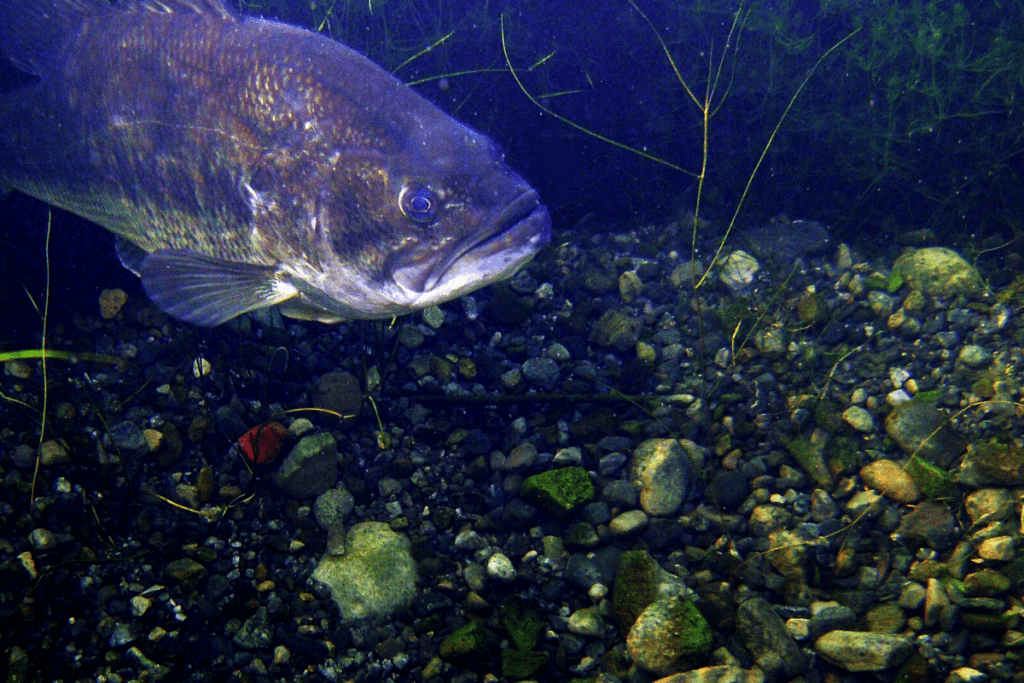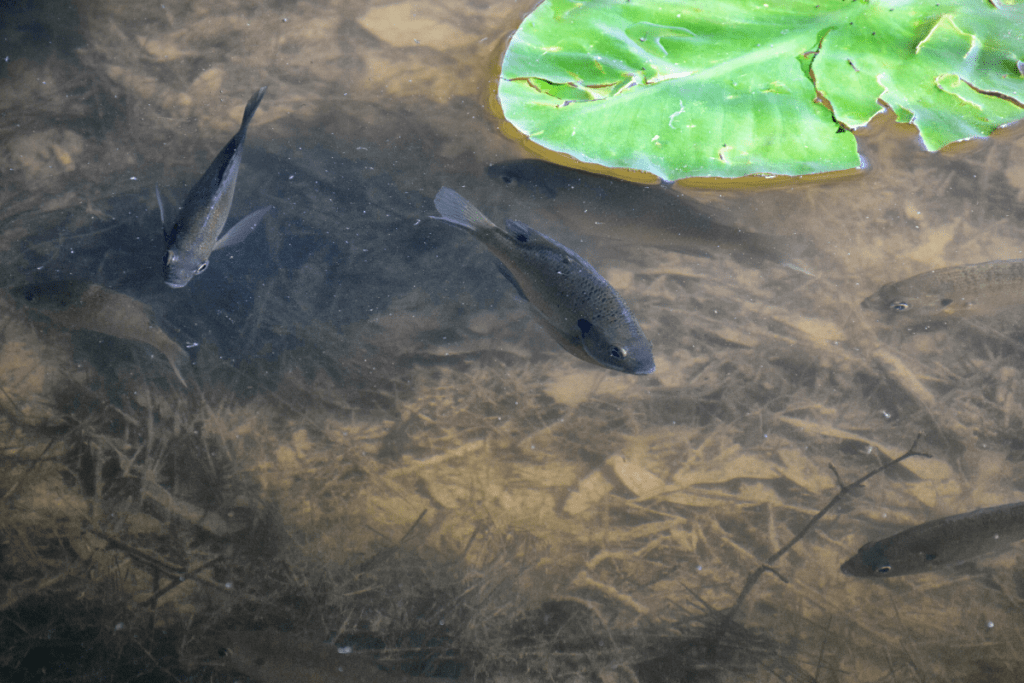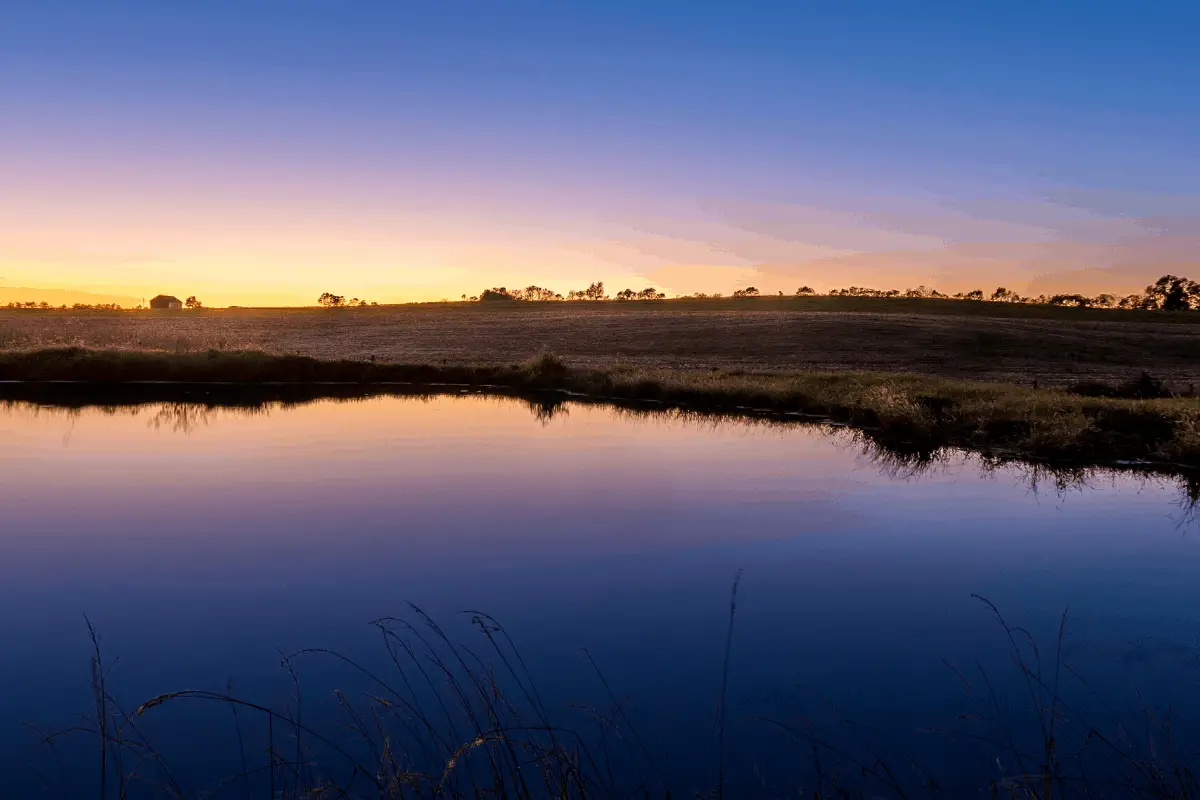For decades, bass anglers spent the majority of their time talking about the phase and positioning of bass in regards to water temperature. In recent years, more support seems to be coming in that emphasizes the amount of daylight as a key component – especially during the spawn.
There is no doubt that water temperature and the amount of daylight are directly related, but it seems that daylight hours may position fish more than first thought. It is not unusual to see bass moving shallow in cold water. This is especially true when the days grow in length.
In this article, we will discuss the differences between temperature and daylight.
Traditional Thinking
For as long as anyone can remember, bass anglers have lived by the water temperature.
I have written many articles and filmed many videos on the very subject, yet are there other factors coming into play?
I have often used the following guidelines to aid in my search for seasonal patterns and habits:
- Water Below 50°: Winter Fishing
- 50° – 60°: Prespawn Fishing
- 60° – 70°: Spawn Fishing
- 70° ↑: Summer Fishing
- 69° – 50°: Fall Fishing
It has worked well for me. I believe if this is the general rule-of-thumb an angler uses they will still catch plenty of bass.
What happens when we take daylight into consideration as well?
What I’ve Noticed
While fishing this late winter and into the early spring, I have noticed some really interesting things going on.
One day while on the water I ran across a lot of bass cruising the shallows. Not just the typical 12” versions either. There were some real bruisers hanging around.
I looked down at my graph and saw that the water temp was only sitting at 48°. That’s cold. So cold that I could barely hold my hand in the lake more than a few seconds before the extreme temperature forced me to pull it out and shake the life back into it.
So why were there big bass in less than a foot of water acting like a balmy June day?
At first, a person might think that it was a bright, sunny day with the shallows warming up quickly.
It wasn’t. The day was chilly and cloudy, yet there they were. Big bass in shallow water.
This happened for a few days as the length of daylight increased. The activity picked up, even though the water temps stayed cold.
Then we were hit with several days of below-freezing nights and the water dropped back to the mid-forties.
The bass vanished from the shallow water and have not been seen since.
So what in the world is happening?

Amount of Daylight Does Matter
Scientists have long known that the amount of daylight influences behavior in mammals.
Whitetail deer start their breeding season as the days become shorter. Bears will go into hibernation. The list goes on-and-on.
There is much less research done on fish – especially gamefish, like bass.
What we do know, is that the sunlight is key for plant and algae growth. These organisms thrive with the additional hours of daylight.
Scientists have also found that the length of daylight in Atlantic Salmon is a key component to their growth rate, maturation, and better digestion of food and conversion into energy. (Link to Article.)
If that same research applies to bass, it is easy to see how their timetable for reproduction could be directly linked to longer daylight hours.
Year-in-and-year-out, my home lake see the largemouth spawn en masse the first week of May. There are a few that hit the nests earlier and some that will continue to spawn into June, but that first week of May has been go-time for the majority of fish over the twenty-five years I have lived on the lake.
Has the weather been the exact same every year?
No.
Has the amount of daylight been the same the first week of May?
Pretty much. Yes.
Interesting.
Are Water Temp and Daylight Related?
I think it is reasonable to say that the water temperature is in direct relationship to how many hours a day the sun is out.
No one would argue against that.
If we take that relationship into consideration, it is easy to see why and how bass anglers refer to water temperature as the gold-standard for determining what phase the bass are in.
Yet, I know, that I will see bass on the beds the first half of May. The water could be seventy-five degrees or sixty degrees. They will be there. That is a wide range of temperatures.
Where Does Water Temperature Matter?
Finding water that is a few degrees warmer or a few degrees cooler throughout the year plays a key role in positioning bass. Especially in short periods of time.
If I hit the lake on a late winter day and the majority of the surface temps are reading forty-five degrees, and if I can find some pockets and bays that are a few degrees warmer, there will be bass in the area.
I have seen it over-and-over.
Rocks, docks, steel piers, etc., hold and release that warmth back out into the water. It is like placing your hand on a brick house after the sun has gone down.
In the water, fish will gravitate to these heat-releasing objects.
Runoff from warm spring rains will pull fish to the backs of coves and pockets in droves. When these conditions are present, that is the first place that I will start in the early spring.
The opposite is true during the summer months.
Lakes and ponds can reach extreme temperatures during the late summer and bass will move to more comfortable locales accordingly. A cool rain will draw fish to tributaries in August just like a warm rain will in March.
Cooler water from the shade is also key during the long summer days.
In all of these scenarios, water temperature is a component to how, where, and when bass will congregate.

So Now What?
Just when you think bass fishing can be confusing enough, this new outlook on seasonal movements starts to get traction.
Here is how I have decided to handle it.
Look for life.
When I go out on the lake the first thing I do is scout for signs of life. When there are zero bluegills, shad, or minnows in shallow water there is little chance you will find a bass there.
When you back the boat into the water and prey species scurry all over you will find bass in the shallows. That is true in cold or warm water.
Looking for signs of life is effective no matter what time of year, the amount of daylight, or the temperature of the water. The food chain starts small and gets bigger. The bass will be near the food – even if they are not actively eating at the moment.
Does That Mean Fast Moving Baits will Work in Cold Water?
Great question.
A recent article on Major League Fishing’s website by Kevin VanDam goes into this very topic. (Here is the link.)
He mentions that he uses a jerkbait all the time in water that is 40 degrees or cooler, and if you know Kevin, he doesn’t fish it slow.
I really liked the part of catching bass shallow on a 1.5 squarebill in cold water. I have done that the last several years and really enjoy throwing that lure when I see fish up in less than 10 feet of water – no matter what the temperature gauge may be reading.
If it works for KVD, who am I to argue?
Final Thoughts
Does the amount of daylight matter? Yes.
Does water temperature matter? Yes.
I think it is fair to say that daylight may be more of a factor in longer seasonal patterns, whereas water temperature is more critical in shorter periods of time. From day-to-day or even within the same day.
I will still scout the water for life each time I head out. Seeing fish of any species is a good indicator of what is going on and how deep.
In fact, I took a break writing this and went down to the dock. A two-pounder was cruising around. I think it’s time to wrap this up and put the boat in.
Which do you feel is a larger factor causing fish to spawn? Temperature or the amount of daylight? Drop a comment below.
Be safe. Tight lines and make sure to go out and encourage someone today. You never know how you may change their life forever.
Isaiah 6:8

